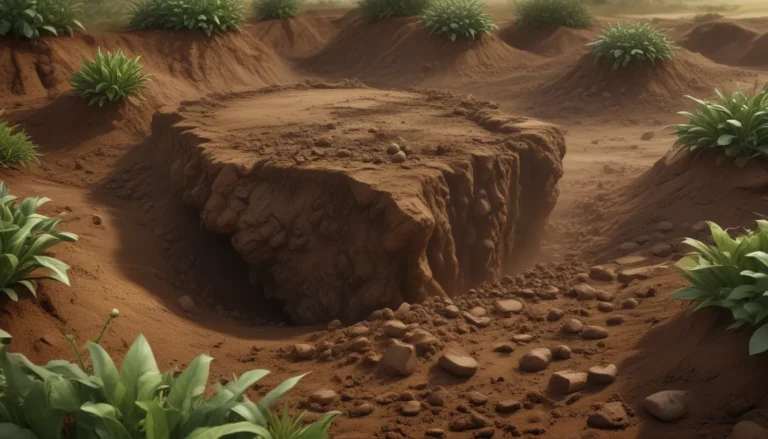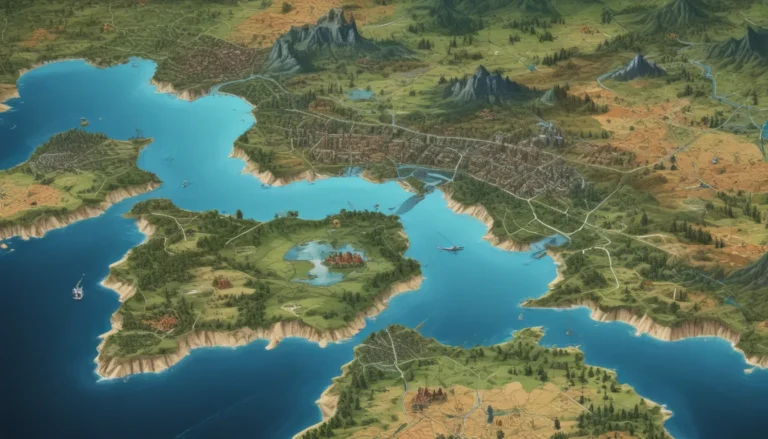A Note About Images: The images used in our articles are for illustration purposes only and may not exactly match the content. They are meant to engage readers, but the text should be relied upon for accurate information.
The ocean’s depths hold a world full of mysteries, and one of the most enigmatic features within these deep waters are abyssal plains. Covering a vast 60% of the Earth’s surface, these flat expanses of the seafloor are shrouded in mystery, waiting to be discovered and understood. Join us on a journey as we delve into the mesmerizing realm of abyssal plains, unveiling eight mind-blowing facts that will leave you in awe of the secrets they hold. From their formation to the unique creatures that inhabit them, prepare to be amazed by the wonders of the abyssal plains.
Key Takeaways:
- Abyssal Plains cover 60% of the ocean floor, hosting diverse marine life and unique geological formations that offer valuable insights into Earth’s history and the mysteries of the deep sea.
The Significance of Abyssal Plains
Stretching across approximately 60% of the Earth’s surface, Abyssal Plains are massive areas characterized by their flat, featureless terrain. These deep-sea plains can be found in all major ocean basins, painting a breathtaking underwater landscape that showcases the beauty and complexity of our oceans.
Formation of Abyssal Plains
Over millions of years, sediments composed of clay and silt settle on the Abyssal Plains, gradually building up layer by layer. These sediments are often carried from land through river systems or transported by currents and turbidity flows, contributing to the formation of these vast underwater plains.
Geological Marvels of Abyssal Plains
Beneath their seemingly monotonous appearance, Abyssal Plains hide fascinating geological structures such as seamounts, abyssal hills, and deep-sea trenches that reach astonishing depths. These features provide a glimpse into the powerful geological processes that shape the underwater landscapes.
Diverse Ecosystems of Abyssal Plains
Contrary to their name, Abyssal Plains are not desolate environments but rather support a rich variety of marine life. Deep-sea corals, sponges, and unique fish species have adapted to thrive in the cold, dark depths of the abyssal plains, creating a vibrant and diverse ecosystem beneath the waves.
Extraordinary Creatures of the Abyssal Plains
The extreme conditions of the Abyssal Plains have given rise to a plethora of bizarre and fascinating organisms. From deep-sea anglerfish with their bioluminescent lures to colossal squid with gigantic eyes, the abyssal plains are teeming with extraordinary creatures that have evolved unique adaptations to survive in this challenging environment.
Carbon Storage and Climate Regulation
Abyssal Plains play a crucial role in regulating Earth’s climate by acting as a sink for carbon dioxide. The sediments on the seafloor store vast amounts of carbon dioxide, helping to mitigate the impact of climate change and highlighting the importance of these deep-sea realms in maintaining environmental balance.
Challenges of Researching Abyssal Plains
Exploring the depths of Abyssal Plains poses significant challenges due to their remote location, extreme pressure, and darkness. Scientists rely on advanced technologies such as remotely operated vehicles (ROVs) and deep-sea submersibles to study these underwater environments and unravel the mysteries they hold.
Insights into Earth’s History
The sediments found on the Abyssal Plains hold valuable clues to Earth’s past, offering insights into past climate patterns, volcanic activity, and the evolution of life on our planet. By analyzing these sediments, scientists can piece together the intricate history of our planet and better understand its geological processes.
Conclusion
In conclusion, the Abyssal Plains are captivating regions of the ocean floor that offer a glimpse into the wonders of the deep sea. From their unique ecosystems to their geological formations, abyssal plains continue to intrigue and inspire scientists and researchers worldwide. By exploring these mysterious underwater realms, we gain a deeper understanding of Earth’s history and the intricate relationships between geology, biology, and the environment.
FAQs
Q: What are abyssal plains?
A: Abyssal plains are expansive, flat regions on the ocean floor, located at depths greater than 4,000 meters. They are characterized by fine-grained sediment and lack significant underwater mountains or topographical features.
Q: How are abyssal plains formed?
A: Abyssal plains are primarily formed through the accumulation of sediments, including fine particles of clay and biological debris. These sediments settle on the ocean floor over millions of years, creating the flat surface of abyssal plains.
Q: What is the role of abyssal plains in ocean ecosystems?
A: Abyssal plains are vital habitats for a variety of marine organisms. They provide a stable environment for deep-sea creatures and support a diverse food web. Many species rely on the organic matter that sinks from higher levels of the ocean to the nutrient-rich sediments of abyssal plains.
Q: Where can abyssal plains be found?
A: Abyssal plains are present in all major ocean basins, including the Atlantic, Pacific, Indian, and Southern Oceans. They are typically located far away from continental margins and are most commonly found in deep ocean trenches and abyssal basins.
Q: Can abyssal plains be explored by humans?
A: Exploring abyssal plains is a significant challenge due to their extreme depth and remote location. However, advanced technology, such as remotely operated vehicles (ROVs) and deep-sea submersibles, allows scientists to study and observe abyssal plains by capturing high-resolution imagery and collecting samples.
Q: How do abyssal plains contribute to our understanding of the Earth’s history?
A: By studying the sediments and rock cores obtained from abyssal plains, scientists can gain knowledge about past climate conditions, plate tectonics, and the evolution of marine life. These findings help reconstruct the Earth’s history and provide valuable data for understanding future environmental changes.
Q: Can abyssal plains pose any risks or threats?
A: Abyssal plains themselves do not pose direct risks, but human activities such as deep-sea mining and pollution can significantly impact these fragile ecosystems. It is crucial to ensure responsible resource exploration and management to protect the delicate balance of abyssal plain environments.
Embark on a journey through the depths of the ocean and uncover the awe-inspiring truths that lie beneath the surface. Join us as we explore the enigmatic world of abyssal plains and discover the incredible wonders that await in these mysterious deep-sea realms.






